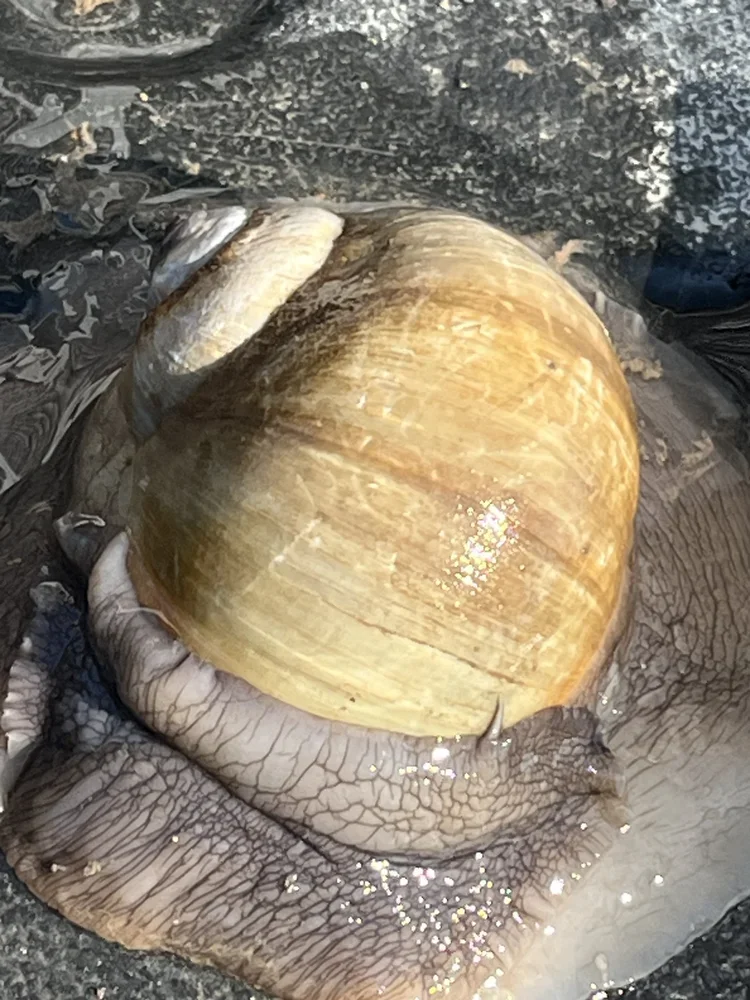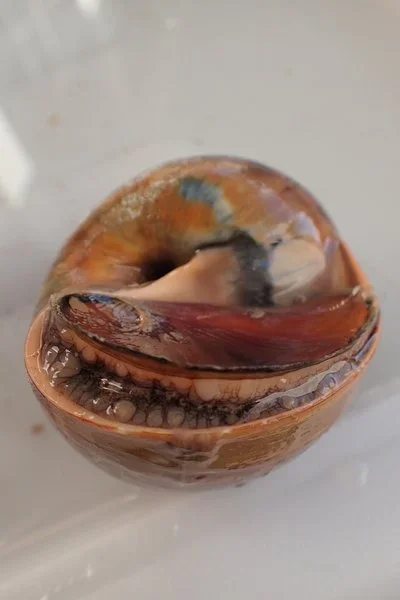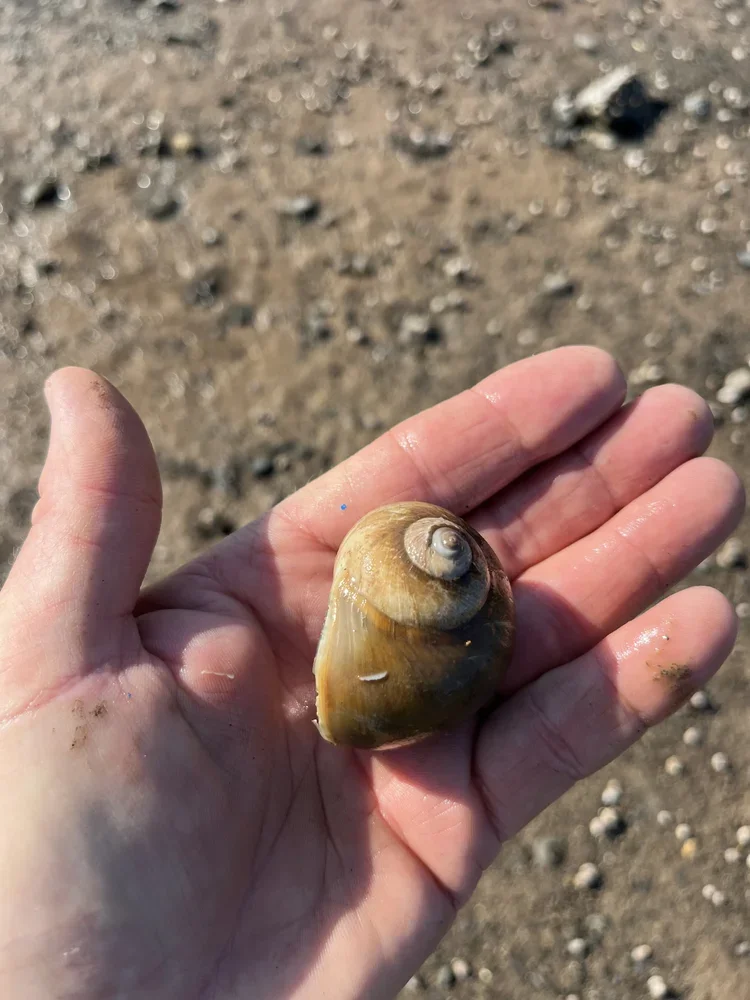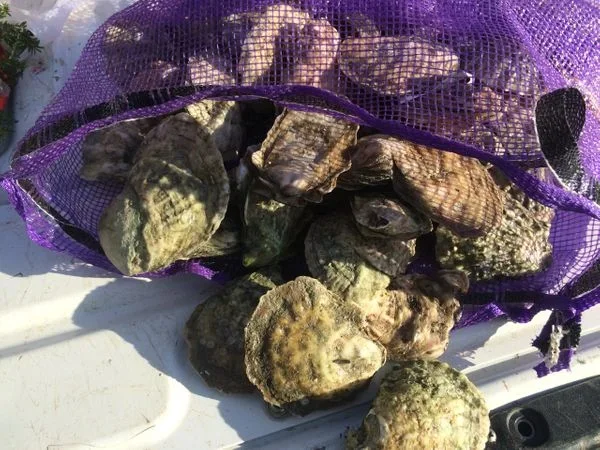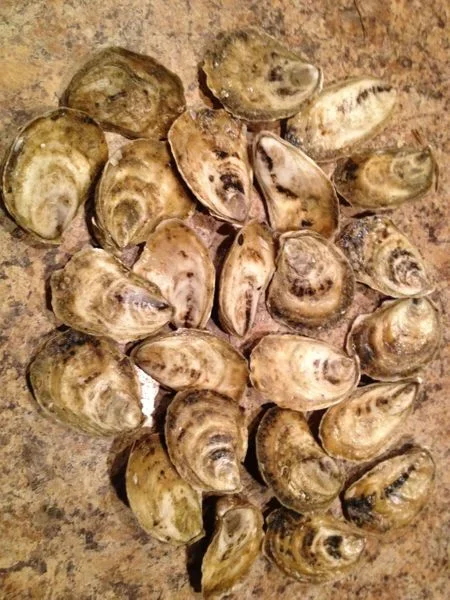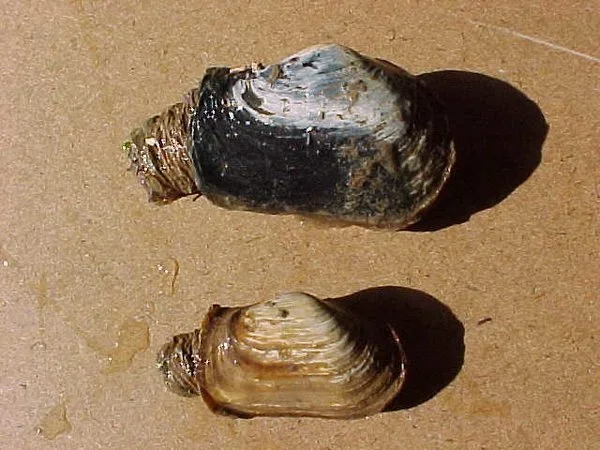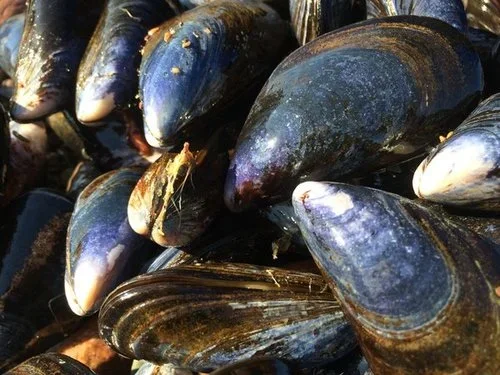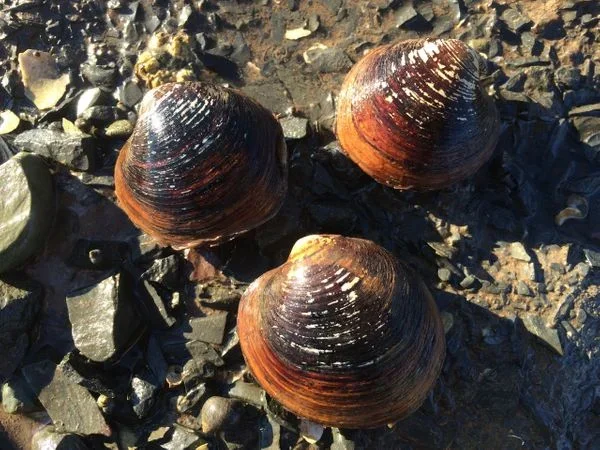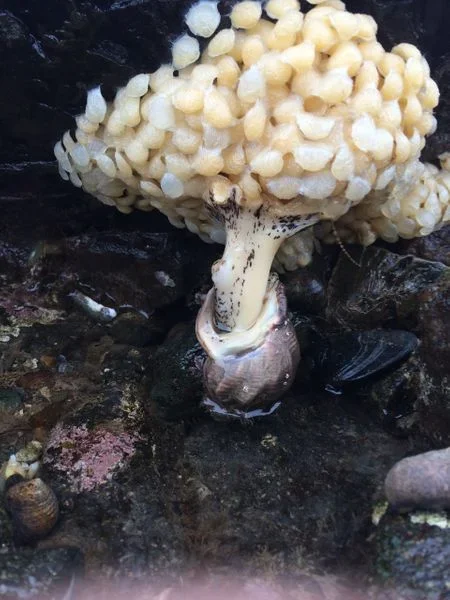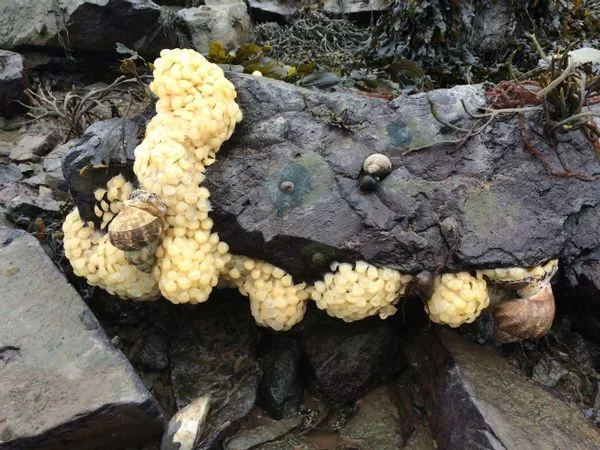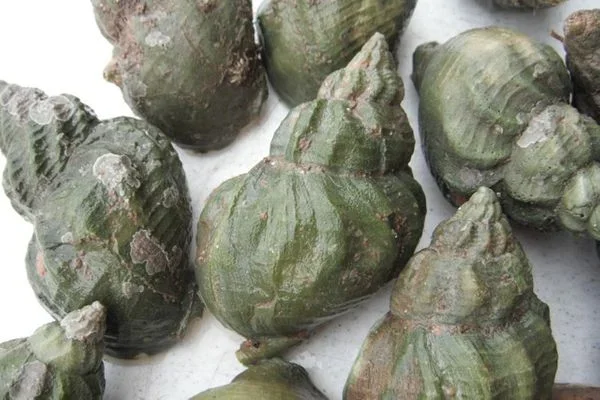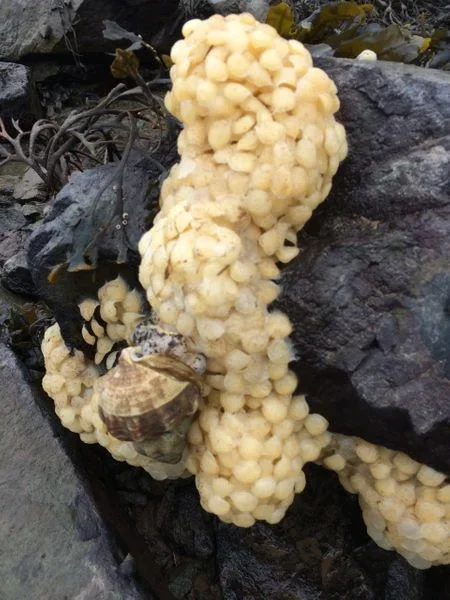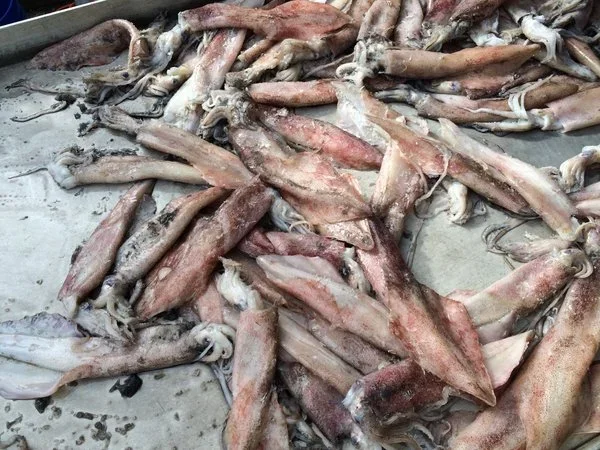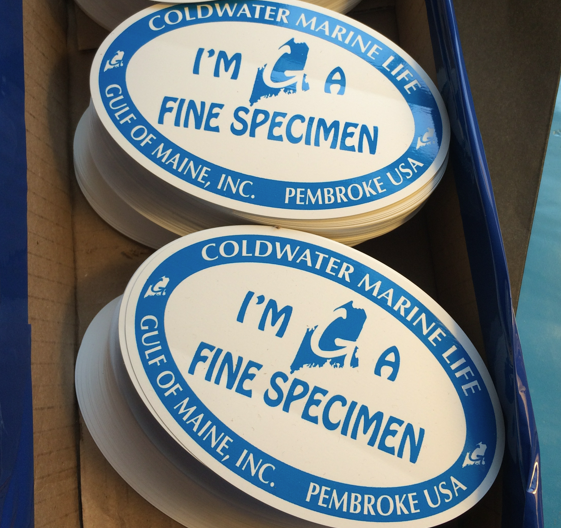Moon snails made these holes in other molluscs, and ate their soft tissued bodies!
Tidepool Tim says, "Of all the creatures you will find on our local beaches - the moon snail will always be one of the most memorable. Often these are fully exposed and making their way across the sand. Other times, one will only see a bulge in the sand, indicating that a moon snail has recently dug its way down into the sand as the tide has receded. When you pick up a moon snail - you will be amazed at the huge domed shell with its large whorls. As the creature realizes it has been disturbed it will start to shoot water from its mantle and retract its large and slimy foot back into its shell. This is a rapid response. In seconds, the snail, like a turtle pulling into its shell, has shrunk to a fraction of its size. Then it starts to close up its opening. At this point, a large, fingernail looking oval shell, the operculum draws tight the opening and poof - the snail is gone! Moon snails are an intertidal mollusc predator that eats clams, periwinkles, and even other moon snails. in the spring and summer months, these snails exude a sandy layer of eggs that lie on the beach and has been named a "sand-collar". As the summer progresses each tiny egg encapsulated in the collar hatches out and a new baby moon snail is born. some clam diggers collect and destroy these egg cases. This would prevent new snails from hatching, growing, and eventually eat the clams that the digger depends on for his/her income.”
Moon snail egg collars.
Moon snail egg collar.


